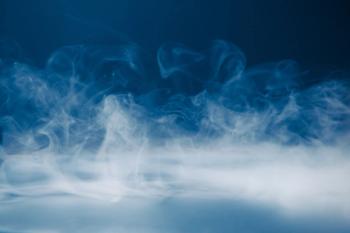
Guangdong University of Technology researchers used a gas chromatography-based method to detect nonylphenol isomers in sewage and wastewater sludge.

Guangdong University of Technology researchers used a gas chromatography-based method to detect nonylphenol isomers in sewage and wastewater sludge.

Here is some of the most popular content posted on LCGC International this week.

Thermal desorption and gas chromatography-tandem mass spectrometry were used to create a method for detecting airborne polycyclic aromatic hydrocarbon (PAH) samples.

A team of researchers has evaluated approaches in exposome research, highlighting sample preparation, MS-based platforms, and data acquisition strategies.

In Part II of our exploration of splitless injection, we will see that it is a surprisingly complex process, and that it is difficult to understand because we cannot see what is happening during the injection process. For this discussion, we will think of the injection process as beginning with the syringe plunger being depressed and ending with the start of a temperature program in the column oven. In most splitless injections, this process requires 30 s to 1 min. There are several band broadening and focusing mechanisms that affect the peak shapes, widths, and heights resulting from splitless injection.

You're invited to publicize your 2024–2025 new product introductions in LCGC. Here's how to get your products included.

In a continuation of our Inside the Laboratory interview with Chris Reddy, we asked him about the recent documentary, “Out of Plain Sight,” that featured him and his team’s research.

In the second part of this edition of “Inside the Laboratory,” Christopher Reddy of Wood Hole Oceanographic Institution discusses why comprehensive two-dimensional gas chromatography is the optimal technique for investigating complex mixtures of organic chemicals in the environment.

In this edition of “Inside the Laboratory,” Christopher Reddy of Wood Hole Oceanographic Institution discusses his laboratory’s work investigating oil spills and uncovering dichlorodiphenyltrichloroethane (DDT) deposits on the ocean floor. This interview is part one of three of our conversation with Reddy.

LCGC International sat down with Christopher “Chris” Reddy of Woods Hole Oceanographic Institution, whose research was the basis for a recently released documentary.

Scientists from the China University of Sciences combined magnetic solid-phase extraction (MSPE) with gas chromatography–mass spectrometry (GC–MS) to analyze perfluoro carboxylic acids (PFCAs) in different water environments.

Here is some of the most popular content posted on LCGC International this week.

A method to help detect genotoxic impurities (GTIs) using headspace gas chromatography (HS-GC) and deep eutectic solvents (DESs) has been developed.

A European Union reference laboratory recently created a new method for analyzing gas chromatography (GC)-amenable pesticides in foods of animal origin.

Spanish scientists recently tested flow injection analysis–mass spectrometry (FIA–MS) and its effectiveness in detecting fraudulent substances in Coleus forskohlii food supplements.

Here is some of the most popular content posted on LCGC International this week.

Jiangsu Police Institute scientists recently created a solid-phase microextraction (SPME)-based method for determining amphetamine-type stimulants.

In the first LCGC Blog of 2025, Caitlin Cain of the University of Michigan highlights the divide between gas and liquid chromatographers, and why both types of techniques should be in the same conversations.

In 2024, we launched a content series, covered major conferences, presented prestigious awards, and continued our monthly Analytically Speaking podcasts. Below, you'll find a selection of the most popular content from LCGC International over the past year.

This article highlights a curated selection of the most popular GC-related content, with a focus on the diverse applications of the technique, as featured in LCGC.

In this LCGC International interview with Beatrice Campanella from the Institute of Chemistry of Organometallic Compounds (ICCOM) in Pisa, Italy, which is part of the Italian National Research Council (CNR), we discuss her recent research work published in Food Chemistry on the subject of a method for quantifying methionine and selenomethionine in food matrices using gas chromatography–mass spectrometry (GC–MS) with aqueous derivatization by triethyloxonium salts (1).

Here is some of the most popular content posted on LCGC International this week.

Separation scientists frequently encounter critical pairs that are difficult to separate in a complex mixture. To save time and expensive solvents, an effective alternative to conventional screening protocols or mathematical peak width reduction is called iterative curve fitting.

Messina Institute of Technology scientists used gas chromatography–mass spectrometry (GC–MS) to profile illegal samples of Cannabis sativa L.

LCGC International spoke with Jim Gearing, Associate Vice President of Marketing, Agilent Gas Phase Separations Division; Massimo Santoro, Group Business Development Director at Markes International; Ed Connor, GC Product Manager at Peak Scientific; and Bruce Richter, Vice President of Research & Development at Restek Corporation.